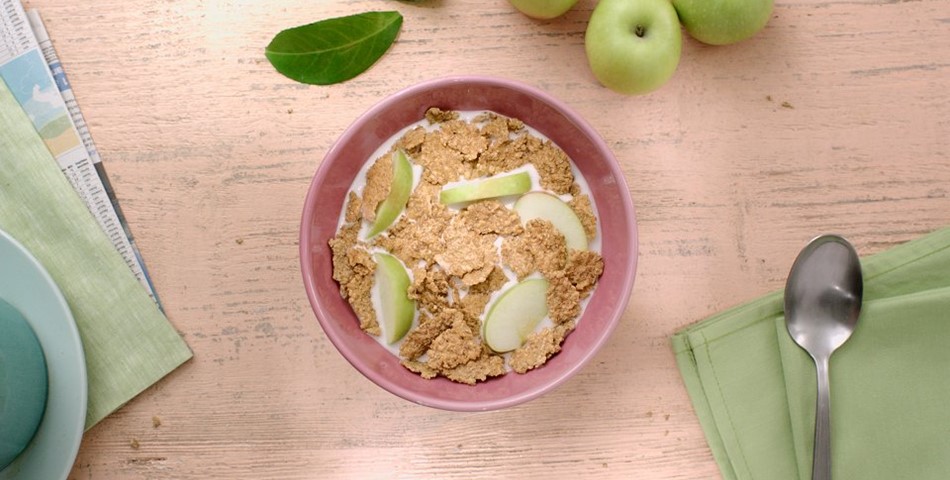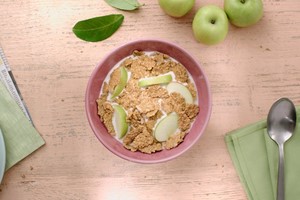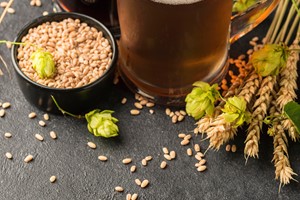Would you like to improve your general health and wellbeing? Well, you may want to follow the advice of the World Health Organization (WHO) about eating more foods rich in fiber, such as wholegrain cereals, pasta, and bread, as well as fruits and vegetables, nuts, and pulses. A recent WHO review[i] of 185 observational studies and 58 clinical trials has concluded that we should eat at least 25 to 29 grams of fiber a day to boost our longevity and lower risks of myriad diseases, with indications that consuming over 30 grams a day offers even more health benefits.
Research[ii](1-3) has also shown that consuming wholegrain on a regular basis helps maintain healthy body weight and promotes digestive health. The analysis “provides compelling evidence that dietary fiber and wholegrains are major determinants of numerous health outcomes and should form part of public health policy,” according to Professor Gary Frost, Imperial College London, writing in the Lancet medical journal. Yet global estimates[iii] show that we are eating less than a quarter of recommended daily wholegrain quantities.
Wholegrain attitudes in the Middle East and North Africa
There is also significant confusion among people in the Middle East and North Africa about what wholegrains are and how much of them should be consumed. While almost eight in 10 people surveyed (80 percent) believe it is important to eat wholegrain, more people (86 percent) admit they don’t know how much they should consume. Half think they eat enough.
A study of over 2,000 people in the United Arab Emirates and Saudi Arabia conducted by Cereal Partners Worldwide, the producer of Nestlé Breakfast Cereals, found that almost one in four (38 percent) people don’t know what foods contain wholegrains, with more than one in four (25-32 percent) mistakenly believing seeds and nuts are a good source, or falsely assuming they are ingredients in white bread.
The study did find that many people are aware of some key facts however, with 64 percent of respondents in the UAE and 53 percent in Saudi Arabia recognizing that wholegrain products are high in fiber and help digestion. Wholegrains’ broader benefits were not found to be widely understood however, with only half knowing that they’re good for heart health, and less than a quarter aware that they can help reduce the risk of type-2 diabetes. Half also said they believe people don’t eat enough wholegrain because they don’t understand its health benefits.
So you now want to incorporate more wholegrains into your daily diet?
Switching to wholegrain is easy – and tasty too! Most grain-based foods have a wholegrain equivalent, with people easily able to switch from:
- White bread to wholegrain bread – often known as ‘wholewheat’ or ‘wholemeal’ bread
- White rice to wholegrain rice such as brown rice, brown basmati rice, and wild rice
- Pasta to wholegrain pasta
- Pancakes to wholegrain pancakes, made with oats or wholegrain flour
- Wheat breakfast cereal to wholegrain Breakfast cereal
Help children choose brown!
Wholegrain foods taste great, but the brown color of some can take a bit of getting used to. Children can initially be suspicious when their pasta, bread, or rice are a different color than they’re familiar with. Here are some tips that could help them make the move:
- Mix white pasta with brown. As brown pasta takes longer to cook, start cooking it and add white pasta later. Gradually reduce the amount of white pasta. They’ll be all brown in no time!
- Sprinkle white breadcrumbs over cooked brown rice – making it whiter and crunchily delicious.
- Make sandwiches with one slice of wholemeal bread and another of white – a fun (and yes, a little sneaky!) way to start getting wholegrain into their lunchboxes.
Looking for other ways to incorporate more wholegrains in your daily diet?
- Start with breakfast: Choose a fiber-rich wholegrain breakfast cereal, oatmeal, or whole-wheat toast. Read the label carefully and check dietary fiber grams per serving; knowing that the higher the fiber content, the longer satiety lasts.
- Experiment with different grains such as buckwheat, bulgur, millet, quinoa, or barley.
- Enjoy wholegrains as snacks. Did you know that popcorn is wholegrain? Three cups of air-popped popcorn contain 3.5 grams of dietary fiber and only 95 calories! Also, try 100-percent whole-wheat crackers.
Good to Know - Brown foods: Are they necessarily wholegrain?
Before you rush off to buy wholegrain foods, be aware that some ‘brown’ foods are not wholegrain at all. They may just be brown because of added ingredients like caramel. So, when you see descriptions like ‘multi-grain,’ ‘high-fiber,’ ‘stone-ground,’ ‘100 percent wheat,’ or ‘seven-grain’ – keep in mind that they do not mean the foods are necessarily made with wholegrain. Read the label for confirmation when you find the word ‘whole’ and choose products high in fiber with fewer added sugars. Barley, quinoa, oats, brown rice, or wholegrain pastas, breads and cereals are some wholegrain foods. If the product is made with ‘wholegrain,’ you know you’re getting the real deal, especially if wholegrain is at the top of the ingredients list. If you’re buying fresh bread from a bakery, there may be no label, so best ask the baker for a wholegrain loaf.
Joumana Dabbagh
Nestlé Nutritionist, Middle East and North Africa
[i] https://www.theguardian.com/lifeandstyle/2019/jan/10/high-fibre-diets-cut-heart-disease-risk-landmark-study-finds
[ii] 1. Harland JI & Garton LE, 2008 Whole-grain intake as a marker of healthy body weight and adiposity. Public Health Nutr. 2008 Jun;11(6):554-63; Williams P et al, 2008 Cereal grains, legumes, and weight
management: a comprehensive review of the scientific evidence. Nutr Rev. 2008 Apr;66(4):171-82.
- Williams P et al, 2008 Cereal grains, legumes, and weight management: a comprehensive review of the scientific evidence. Nutr Rev. 2008 Apr;66(4):171-82
- Ye EQ et al. 2012 Greater whole-grain intake is associated with lower risk of type 2 diabetes, cardiovascular disease, and weight gain. J Nutr. 2012 Jul;142(7):1304-13.
[iii] https://www.eurekalert.org/pub_releases/2019-04/tl-tlg040219.php (29g average intake per day, compared with 125g recommended per day)












